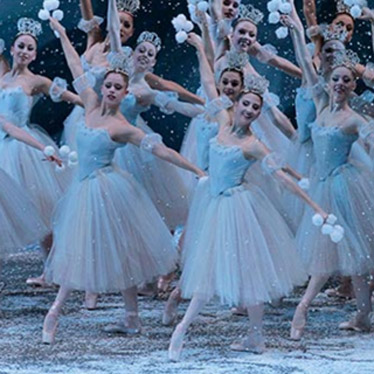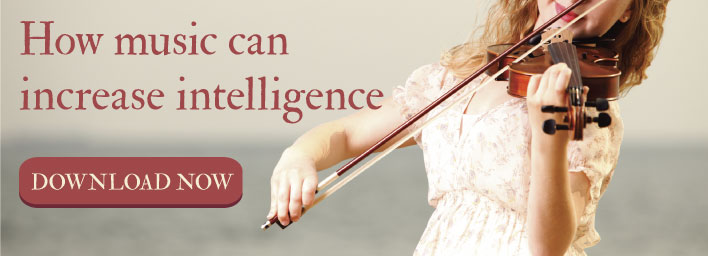Little Known Facts About the Nutcracker Suite and Tchaikovsky

Pyotr Ilych Tchaikovsky is the most famous Russian composer of the 19th Century, although that acclaim didn’t come all at once. As with many composers who went unlauded in their own lifetimes, audience appreciation of Tchaikovsky’s works grew over an expanse of time.
It’s hard to imagine that the man who composed the world-famous and truly adored Nutcracker Suite and Swan Lake, among other famous classical music scores, was a hypochondriac, refused to drink anything but bottled water (especially eccentric in an era when commercially bottled water wasn’t the norm), and who also suffered from the irrational fear that his head might fall off in the midst of conducting the orchestra.
You can read more interesting facts about Tchaikovsky here.
Tchaikovsky’s Nutcracker Suite: Did You Know…?
Today, in honor of the holiday season, we want to share some interesting and little known facts about The Nutcracker Suite.
We hope some new information and a fresh perspective will help you fall in love with this beloved work all over again.
1. It wasn’t composed for children
The Nutcracker Suite was commissioned by Imperial Russian Ballet choreographer Marius Petipa in 1891. Petipa wanted a ballet score based on Alexandre Dumas’ (1802-1870) adaptation of E.T.A. Hoffman’s (1776-1882) fantasy story, The Nutcracker and the Mouse King. Interestingly, Petipa grew ill mid-way through his choreography, leaving strict instructions for his successor – Lev Ivanov – which is why the choreography is so consistent throughout.
The original story was not a children’s tale at all, but rather a glimpse into the darker side of humanity – how a nightmare can bring to light your greatest fears. So, while you may enjoy playing tunes from The Nutcracker to delight the children in your life, the roots of the magical ballet are much darker than most people realize.
For example:
- The main character (named Marie, rather than Clara) cuts her arm badly on the glass door of the toy cabinet during one of the battles and is wounded for much of the story.
- The “Mouse King” is a hideous character, with seven heads.
- The battles between the toy soldiers and the mice are gruesome in detail.
- The Mouse Queen’s mice children are trapped and killed, one-by-one, by an angry princess.
- “Marie” (Clara) becomes trapped in the world of dolls forever (albeit, as their queen).
As long as you’re taking advantage of holiday movies this season, check out The Nutcracker and the Four Realms, starring Keira Knightley as the Sugar Plum Fairy, which is a closer adaptation to Hoffman’s original, darker work.
2. Professional ballet companies go the extra mile
While community adaptations of the ballet abound, the world’s most professional ballet companies take the production very seriously, and their backdrops, payroll, and stage props are proof of that. For example, the New York City Ballet has:
- A giant Christmas tree that weighs more than a ton and “grows” 42 feet
- 62 orchestra members who play for every single performance
- An instrument called a celesta (pronounced, “che-less-ta”) that plays during the Sugar Plum Fairy solo. According to the NYCB website, “Tchaikovsky used the newly-invented celesta to make the music for the Sugarplum Fairy sound like the "sprays of a fountain" as the choreographer Marius Petipa requested.” Click to see a celesta in action.
- Roughly 57 different people who work backstage to keep everything going.
With ticket prices starting at around $95 each, you pay quite a bit more for the NYCB version than you do when you support your local symphony and ballet companies.
This year, two professional dance companies made headlines with some “firsts.” One of these was the NYCB casting the very first black “Marie” (called Clara in many of the U.S. versions). The second is the famous Joyce Theater in New York, who hired tap choreographer Michelle Dorrance and her company, Dorrance Dance, to create a tap-version of The Nutcracker set to Duke Ellington’s jazzier arrangement of Tchaikovsky’s score.
3. Tchaikovsky wrote part of the work as a dare
It is said that while in the midst of composing The Nutcracker, a friend of Tchaikovsky’s made a bet that he couldn’t write a melody based on an octave in sequence.
He accepted the challenge, and the result is the Grand Adage from the Grand Pas de Deux, one of the most famous ballet duets of all time – played as Clara dances with her adored Nutcracker Prince during the second act of the ballet.
4. The ultimate costumers' dream (and challenge)
If you’ve ever seen The Nutcracker, you’re aware of the ornate and larger-than-life costumes that appear throughout the show. Different ballet companies handle costume challenges differently, but the NYCBT’s costumes are standards for the types of Nutcracker costumes created by the world’s major ballet companies (Moscow, Los Angeles, Paris, London, etc.):
- There are more than 150 individual costumes appearing on stage
- The skirt Mother Ginger’s little children emerge from is made using a 40-pound metal frame, explaining why Mother Ginger typically does more walking and swaying, than dancing.
- The Sugar Plum Fairy performs her solos in a minimum of seven layers of tulle
- More than 144 separate jingle bells are sewn onto each costume of the Candy Canes
- The Dewdrops’ leotards and tutus are each embellished with 65 actual crystal “dewdrops”
5. You can thank San Francisco for The Nutcracker’s success in the U.S.
The Nutcracker was performed exclusively in Russia, and then throughout Europe, for the first several decades. The ballet was largely performed by children, which elicited continuous criticism from the audience. Its evolution from “liked but not loved,” to “holiday tradition,” goes something like this:
- 1919: Russian choreographer Alexander Gorsky casts Clara and The Nutcracker using adults, rather than children. He also creates an abridged version to keep the performance shorter (its two-hour, on average, length being one of the major criticisms).
- 1920 – 1934: Various choreographers continue to address audience criticisms by casting more of the roles to adults, figuring out which dances were the best to remove to shorten the ballet and increase audience appreciation, and making Clara “dream” the entire Toyland sequences to make the story more believable.
- 1934: The ballet is performed in England - the first time the entire ballet was performed outside of Russia and mainland Europe. The choreography was handled by Nicholas Sergeyev (originally from Russia), who brought back Petipa’s original choreography.
- 1944: San Francisco Ballet’s Artistic Director, Willam Christenson, who decided to use Petipa’s original choreography in its entirety (no abridged version), and opened the ballet on Christmas Eve. The audience loved it, and the San Francisco Ballet has performed The Nutcracker every Christmas Eve – and throughout the winter season – since then.
- 1954: The New York City Ballet premiered George Balanchine’s staging of the work, which includes Tchaikovsky’s complete, original ballet libretto. This version is trademarked as George Balanchine’s The Nutcracker.
6. Non-Traditional versions abound
Choreography is often altered or re-envisioned to create a fresh perspective. In Russia, Europe, and the U.S., most companies stick with more traditional choreography because audiences balk otherwise. However, other countries and cultures take more creative license since the work isn’t as embedded in their traditional holiday repertoire.
For example:
- In China, you may attend versions paying homage to the Chinese New Year, with the Crane Goddess usurping the role of the Sugar Plum Fairy and dragons taking over for the mice.
- South Africans appreciate the setting switch from the westernized living room and winter wonderland to the Kalahari desert, where local dance and circus arts are performed.
- Ballet Hawaii has paid respect to their indigenous people and culture with a Waltz of the Flowers that includes tropical flowers and relocating the snow scene to the top of Mauna Kea.
As an Economist post titled, How “The Nutcracker” Danced all Over the World, puts it, The Nutcracker “…has been tweaked, honed and reinvented, becoming the perfect fabric onto which Christmas dreams are stitched.”
That is the most wonderful thing of all about music, dance, and the performing arts. While we respect and honor the standards, we also have the ability to infuse them with personal interpretations, influences, and stories to love them as our own.
Hopefully, these little-known and interesting facts about The Nutcracker will continue to inspire your own interpretations as you play Tchaikovsky’s famous music throughout the holiday season.
Top photo of New York City Ballet's The Nutcracker. Photo by Paul Kolnik, courtesy of www.nycballet.com


